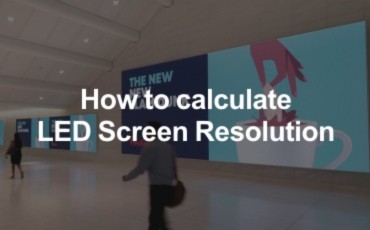Introduction
Immersive 3D LED screen galleries turn static exhibits into living stories. By wrapping visitors in high-resolution LED walls, combining volumetric content and real-time interactivity, museums and brands create memorable, shareable experiences.
This guide explains why LED is the ideal backbone for modern immersive spaces, practical design rules, recommended specs, content and playback workflows, purchasing vs rental tradeoffs, operations, and product suggestions.

Why choose LED for immersive 3D galleries
LED walls deliver brightness, contrast, and seamless tiling that projection struggles to match in lit environments. High pixel density (fine pitch) maintains image clarity at close viewing distances while high refresh rates and low latency preserve realism for motion and interactive elements.
Compared with projection, LED requires less blackout control and provides more consistent color across large curved or wraparound surfaces — ideal for gallery installations that must work in mixed lighting and attract repeat visitors.
Immersive 3D LED screens Types & specifications to prioritize
Pixel pitch: For close-up, walk-through galleries choose P1.2–P2.5 for crisp detail. For larger panorama zones, P2.5–P4 is acceptable.
Brightness & HDR: 800–1,500 nits (or higher for outdoor-facing exhibits) keeps visuals vivid under ambient light. HDR-capable modules increase dynamic range.
Refresh rate & processing: Aim ≥3,840 Hz scan rate or hardware + software that removes flicker for camera/streaming compatibility. Use media servers and video processors that support 60–120 Hz content playback at native resolution.
Installation form-factor: Flat, curved, and faceted panels; transparent LED for layered effects; floor-grade LED for walkable installations (ensure IP, shockproof ratings).
Connectivity & redundancy: Dual-network streams, redundant power and hot-swappable modules minimize downtime.
Space, lighting and camera coordination
Design the room as an integrated system: sightlines, visitor flow, acoustics, and ambient lighting all affect perceived immersion. Use controllable lighting (dimmable, zoneable) to accent LEDs without creating hotspots.
If installations will be filmed or live-streamed, coordinate LED refresh rates and color calibration with camera frame rates, shutter speeds, and exposure to avoid moiré or rolling artifacts.

Content design & 3D techniques
Successful immersive content mixes pre-rendered 3D, depth maps, parallax layers, and real-time engines. Use higher-resolution assets for focal areas and procedural/content streaming for peripheral regions.
Keep interactive touchpoints clear and minimal: gestures, proximity triggers, or mobile AR companions extend engagement without confusing visitors. Design transitions to guide attention — slow pans and parallax create depth; stutter cuts break immersion.
Playback, media servers & hardware integration
A reliable playback stack is essential. Typical components:
Media server (Resolume/Notch/Green Hippo-style workflows or equivalent)—for timeline control, layer blending and real-time effects.
Frame-synchronized video processors and LED controllers supporting the full panel resolution.
Low-latency networking (dedicated VLANs, fiber backbone) for live camera feeds and interactive inputs.
Backup playback systems and content versioning to allow fast rollbacks.
Immersive 3D LED screens Purchase vs rental — how to decide
Purchase when the installation is long-term (≥2–3 years), requires bespoke shapes, or when you need full color-match and warranty control. Rent for pop-ups, touring exhibits, or one-off seasonal activations.
If buying, require acceptance tests (color, uniformity, pixel failure), service-level agreements, and on-site training. If renting, inspect module quality, seams, and transport-related wear handling.

Operations, maintenance & troubleshooting
Create a pre-opening checklist: module inspection, color calibration, network checks, audio-video sync test, emergency stop verification. Maintain spare LED modules, power supplies, spare controller units, and a calibrated colorimeter.
Log every incident and maintain a content rollback plan. Train on hot-swap replacement and on-the-fly content patching to keep guest experience uninterrupted.
Interactive LED display Investment & expected ROI
Beyond ticket sales, immersive 3D galleries drive sponsorship, branded content opportunities, merchandise sales, social media amplification, and lease/licensing of content.
Build KPIs: dwell time, social shares, repeat visitor rate, and secondary revenue. Factor in lifecycle costs (maintenance, energy, support contracts) when calculating total cost of ownership.

Product recommendations (reference to product classes)
For immersive gallery zones we typically recommend fine-pitch indoor modules such as indoor P1.9 and indoor P2.5 for focal areas, combined with P2.5–P3.9 for larger panoramas.
Choose modules with high refresh/scan specifications, HDR support, and good splicing tolerances. Pair with a professional media server and frame-sync video processor.
For procurement, refer to your LED supplier’s product catalog (use the product models above when requesting demos or test samples) and book an on-site inspection/demo before final acceptance.
3D LED video wall Conclusion & call to action
immersive 3D LED screen gallery blends fine-pitch LED video walls, curved or faceted layouts, and interactive content to surround visitors with high-resolution visuals.
Focus on pixel pitch for near-field clarity, synchronized playback (low latency + frame sync), and a content strategy that mixes pre-rendered depth layers with real-time effects.
An immersive 3D LED screen gallery is more than hardware — it’s a systems design challenge combining display tech, content craft, spatial planning and operations. Start with clear KPIs, test fine-pitch modules in-situ, and plan for redundancy.

FAQ
Q1 — What pixel pitch should I choose for a walk-through immersive gallery?
For walk-through or near-field zones choose fine-pitch modules (P1.2–P2.5) for crisp detail; use P2.5–P3.9 for larger panorama areas.
Q2 — How do I design content that looks 3D on wraparound LED walls?
Use layered depth maps, parallax animation, and a mix of pre-rendered 3D assets plus a real-time engine or media server to preserve depth and responsiveness.
Q3 — Should I buy or rent LED for an exhibit?
Buy for permanent, custom installations (warranty & SLA control); rent for pop-ups or tours to lower upfront cost—always calculate TCO and expected lifecycle.
Q4 — What are the must-have operational safeguards?
Daily pre-open checks, spare modules and power supplies, redundant network/power, scheduled color calibration, and a rapid SLA with your LED vendor.
Q5 — How do I measure ROI for an immersive LED gallery?
Track dwell time, ticket conversions, social shares, sponsorship revenue, and repeat visits; factor in energy and maintenance for net ROI.
AUTHOR:Amy



